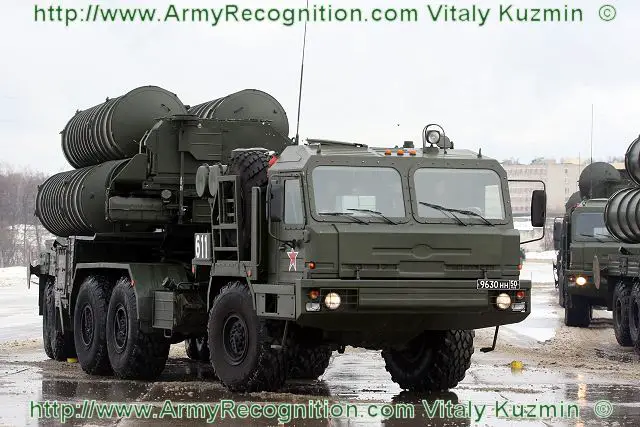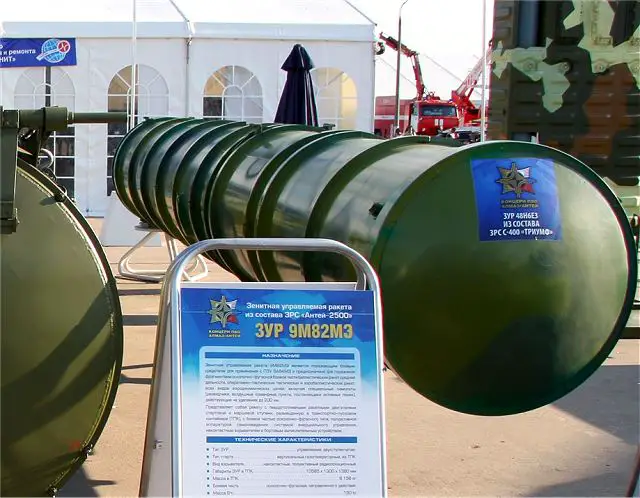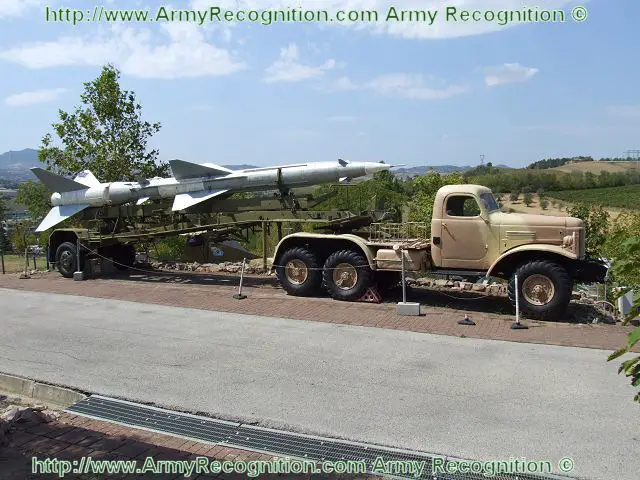|
|
|||
|
Military Defense Industry Technology - S-400 missile Crimea
|
|||
|
|
|||
| Analysis : S-400 missile systems to boost Russian air defense in Crimea | |||
|
The fielding of air defense units stationed in Crimea with S-400 Triumph (NATO reporting name: SA-21 Growler) surface-to-air missile (SAM) systems shall heavily strengthen the Russian air defenses in the region, according to the Gazeta.ru online news agency.
|
|||
|
|
|||
 Russian S-400 TEL Transporter Erector Launcher Russian S-400 TEL Transporter Erector Launcher |
|||
|
|
|||
| The S-400 Triumph is designed to defend against electronic warfare, early warning and control and reconnaissance aircraft, including those being part of reconnaissance/strike complexes, strategic bombers carrying antiradiation, cruise, tactical, operational and medium-range ballistic missiles and other air threats in electronic countermeasures-heavy environment. The SAM system engages threats travelling at a speed of 4.8 m/s at a range of 400 km and altitude of 30 km. The current procedure for receiving advanced air defense (AD) materiel is roughly as follows. A regiment receives its latest materiel at the Kapustin Yar Missile Range and then test-fires it (otherwise, its SAM systems may not be cleared for alert duty). Then, the systems assume the travelling configuration, displace to a railhead and proceed by rail to their unit, escorted by armed guards. The personnel are given conversion training at the operational conversion unit in the town of Gatchina prior to receiving their missile systems. This also applies to the 18th Guards Air Defense Missile Regiment of Sevastopol and Feodosiya, which is part of the 31st AD Division. It is receiving at Kapustin Yar the so-called regimental set of S-400s, i.e. the system command post (also known as control equipment comprising the 55K6E command post and 91N6E radar) and two SAM systems, each comprised of a 92N6E multifunction radar and 12 5P85SE2/5P85TE2 self-propelled launchers, each mounting four 48N6E3/48N6E2 missiles. |
|||
|
|
|||
 48N6E3 missile 48N6E3 missile |
|||
|
|
|||
|
The exact number of the launchers the Feodosiya-based unit is receiving as part of its regimental set is unknown.
In addition, the regiment is to receive relevant SAMs (the hardware and software of the 98Zh6E SAM system allows firing the 48N6E3 and 48N6E2 missiles and the 48N6E as well). It is possible that the regiment has 40N6 missiles as well. The 48N6E3 and 48N6E2, which range is 250 km and 200 km respectively, share a common layout, a semiactive homing head able to handle targets with a speed of 4,800 m/s and 2,800 m/s respectively, and an upgraded adaptive warhead tailored to enhance their effectiveness against ballistic targets. In addition, the 18th AD Regiment is to receive the 30Ts6E maintenance equipment set as part of the S-400 package. All of the Triumph’s components are mounted on self-propelled high-mobility wheeled chasses and furnished with integral power supply, positioning, geolocation, communications and utility systems. The system’s components may be plugged to external power supply units to operate in uninterrupted manner for a long time. There are reasons to believe that the air defenses of Crimea will gain a drastically advanced capability after the S-400s have set up shop there. As is known, an air defense system consists of a system of SAM and fighter jet coverage and a system of radar surveillance. |
|||
|
|
|||
 Russian SA-2 Guideline Ground-to-air missile system Russian SA-2 Guideline Ground-to-air missile system |
|||
|
|
|||
|
Let us see again what Crimea’s air defenses have looked like until recently. The air defense forces stationed in Crimea before 1991 had been strong enough. In particular, the peninsula accommodated the 1st AD Division in Sevastopol, which comprised the 174th AD Missile Brigade (city of Sevastopol, Senezh-M automatic control system) made up of battalions operating the S-75 (SA-2 Guideline), S-125 (SA-3 Goa) and S-200 (SA-5 Gammon) SAM systems (later the S-200 and S-300 (SA-10 Grumble) ones); 206th AD Missile Brigade (Yevpatoria, Senezh-M automatic control system), S-75, S-125 and S-200 SAM battalions; 1014th SAM regiment (Feodosiya, Baikal-1 automatic control system), S-75 and S-200 SAM battalions (later the S-200 and S-300 battalions); 62nd Fighter Regiment (Belbek AFB, Rubezh-1M automatic control system) on Sukhoi Su-27 (Flanker) fighters; 16th Radar Brigade (Sevastopol) comprising radar battalions in Belbek, Ai-Petri, Yevpatoria and Kerch, and separate radar companies stationed at Cape Fiolent, in Alushta, Opolznevoye, Cape Tarkhankut, Jankoi, Gvardeiskoye, Razdolnoye, Cape Meganom, Feodosiya and Kazantip.
These days, there is the Russian Aerospace Force’s 31st AD Division stationed in Crimea. It comprises the 12th AD Missile Regiment in Sevastopol (CP and two S-300PM battalions) and 18th AD Missile Regiment in Feodosiya, the latter receiving the cutting-edge materiel. The radar surveillance system in Crimea is represented by the 3rd Radar Regiment in Sevastopol and Lyubimovka. In addition, a Podsolnukh over-the-horizon radar is stationed in the peninsula. The fighter coverage is provided by the 27th Composite Air Division at Belbek AFB. The division consists of the 37th Composite Air Regiment in Gvardeiskoye, which operates Su-24M (Fencer-C) tactical bombers and Su-25 (Frogfoot) attack aircraft, and 38th Fighter Regiment on Su-27s and Su-30SMs (Flanker-C) at Belbek AFB. On the face of it, there are far less assets there now than the 1st AD Division used to have. One should keep in mind, however, that the S-300PM and S-400 SAM systems are far more superior to their predecessors as far as lethality and rate of fire are concerned. According to Colonel General Vladimir Litvinov, former first deputy commander-in-chief, Air Defense Force, Crimea’s air defenses are quite adequate for contingencies as well. "Crimea’s air defenses can be beefed up quickly at a push. In my opinion, joint command and control of the assorted AD units on the peninsula should be improved [on the basis of automation]," the general stressed. Colonel General Igor Maltsev, former chief of the Air Defense Force Main Staff, believes that the refining of the air defenses must proceed from the adversary’s capabilities in the first place. "What air threats oppose us in this theater of operations? The Bulgarian and Romanian air forces are no formidable opponents to us. Turkey will hardly ever risk an open conflict with Russia. I presume the S-400s in Crimea are designed to deter the United States from provocations against the Russian Federation in the southwest strategic area," Maltsev said. Obviously, the strengthening of Crimea’s air defenses shall continue - as soon as possible to boot. Ordered by the Russian president in February, the snap inspection of the Southern Military District, of which the Crimea Peninsula is part, showed that the military is able to project power into the strategic region quickly, according to the Gazeta.ru online news agency. |
|||
|
|
|||
|
© Copyright 2016 TASS. All rights reserved. This material may not be published, broadcast, rewritten or redistributed.
|
|||
Analysis S-400 missile systems to boost Russian air defense in Crimea TASS 11908161
- Posted On














